




This eBook is licensed to you for your personal enjoyment only. It may not be re-sold or otherwise redistributed to other people. If you are reading this eBook and did not purchase it, or it was not purchased for your use only, then you should return it and purchase your own copy.
Copyright © 2017 by Dr. Anna Cabeca. All rights reserved, including the right to reproduce this eBook, or portions thereof, in any form. All images are purchased
No part of this eBook may be reproduced, transmitted, downloaded, decompiled, reverse engineered, or stored in or introduced into any information storage andretrieval system, in any form or by any means, whether electronic or mechanical without the express written permission of Dr. Anna Cabeca. The scanning, uploading, and distribution of this book via the Internet or via any other means without the permission of Dr. Anna Cabeca is illegal and punishable by law.

Information in this eBook, on my website (www.DrAnnaCabeca.com) and in any materials linked to in this eBook are provided for informational purposes only and not intended to replace a one-on-one relationship with a qualified healthcare professional and is not intended as medical advice.
Dr. Anna Cabeca provides information based on years of medical practice and encourages you to make your own health care decisions based upon your research and in partnership with a qualified healthcare professional.
Do not use the information provided in this eBook for diagnosing or treating a health problem or disease, or prescribing medication or other treatment. Always speak with your physician or other healthcare professional before taking any medication or nutritional, herbal or homeopathic supplement, or using any treatment for a health problem.
If you have or suspect that you have a medical problem, contact your healthcare provider promptly. Do not disregard professional medical advice or delay in seeking professional advice because of something you have read in this eBook.
Information provided in this eBook and the use by you of any products or services referenced in this eBook, or in linked to materials, DOES NOT create a doctor-patient relationship between you and Dr. Anna Cabeca.
Information and statements have not been evaluated by the Food and Drug Administration and are not intended to diagnose, treat, cure, or prevent any disease.
Please review our Terms of Service (http://drannacabeca.com/terms-of-service/) and Privacy Policy (http://drannacabeca.com/privacy-policy/). We offer this eBook, including all information linked to on Dr. Anna Cabeca’s website and elsewhere, to be available to you, conditioned upon your acceptance of all terms and conditions of these documents.

I’d like to acknowledge my entire team for their incredible support through the years in creating and delivering quality health programs, products and educational materials, including this eBook. Most of my team has been involved with me for years in supporting my mission and I couldn’t do what I do without them. They also provide such wonderful customer care to all of you, which is paramount to me.
In regards to this eBook in particular, I’d like to personally acknowledge my copywriter, Diane Blum, for her considerable help with this eBook.

You know what I mean!
The Eve Quiz showed that some 64% of women respondents had troublesome vaginal or vulvar dryness. Let’s take a look at some of the most common occurrences….


“In one study (REVEAL) 80% of women reporting that they experienced pain during sexual intercourse ‘at least sometimes’ also reported that they just dealt with it!”

As our hormones decline a number of things change your lush oasis into…well…here are just a few of the symptoms you may find cropping up down there:
▪ A reduction in collagen and elasticity of the vagina
▪ Thinning of the epithelium
▪ Fewer blood vessels
▪ A decrease in the density of connective tissue
▪ An increase in vaginal pH alkalinity and decrease in healthy vaginal flora
▪ Diminished natural lubrication
▪ PAIN! (And we just learn to live with it!) In one study (REVEAL) 80% of
women reporting that they experienced pain during sexual intercourse
“at least sometimes” also reported that they just dealt with it!
12
From my clinical experience, many women do not realize that vaginal dryness is not necessarily related to turn on. It is physiologic and physical. This is an important distinction because it can add to relationship distress.
12Available at: https://www.ncbi.nlm.nih.gov/pmc/articles/PMC3735281/#b19-ijwh-5-437

So, are your lady parts a desert or lush oasis?
First, minimize toxin exposures to your delicate lady parts!
One of the most common reasons for vaginal and vulvar irritations is related to the wide variety of personal care products women use, such as bubble baths and perfumed soaps! They can be very irritating to your lady parts, can cause allergic reactions and may even expose you to nasty endocrine disrupting chemicals, so please read labels and be aware of this!


Tampons and pads can also be laden with hormone disrupting chemicals & GMOs, plus can cause tissue trauma and irritation on their own.
Considering how many feminine hygiene products women use across the span of
“Fragrances, adhesives and other synthetic materials can also be of potential concern in all of these products.”

their lives it is surprising that there isn’t more information detailing what ingredients are used in these products (and whether those ingredients are safe given the repeated use and absorbent tissues of the vagina). In the past, some of these products have been found to contain parabens (used as preservatives, and a known endocrine disrupting chemical).
Parabens can also be found in personal lubricants, by the way. Fragrances, adhesives and other synthetic materials can be of potential concern in all of these products. If you are interested in reading more about this topic I’ve included this article13 (https://ehp.niehs.nih.gov/122-a70/) for your review, entitled, “A Question for Women’s Health: Chemicals in Feminine Hygiene Products and Personal Lubricants”.
As I suggest relating to all of the products you apply to your body, start reading labels! Try to find more holistic and pure products to use. The Environmental Working Group (ewg.org) has a lot of good info on personal care products, so start there.
13 Available at: https://ehp.niehs.nih.gov/122-a70/
So, are your lady parts a desert or lush oasis?

Second, ensure you are including essential fats and probiotics in your diet
I recommend a Keto-Alkaline™ Lifestyle and Diet as well…you can find out more about this on my website & blog This diet includes healthy fatty foods such as salmon (wild-caught, of course), oysters, free-range eggs, avocado (yummy), butter from free-range cows, olive oil, etc.
Eat fermented foods which are rich in probiotics, or supplement with a good probiotic.
Most of us don't get enough healthy omega-3's. This is one I typically recommend supplementing with a high quality source that is heavy metal tested and obtained from sustainably wild caught fresh (not farmed) sources. There are many high quality brands... or email us for a recommendation!
Third, use one or more of these solutions which include lubricants and vaginal moisturizing creams, herbal remedies, and estrogen or DHEA based therapies.
Here is a summary chart of many therapeutic options that address and/or are marketed to address vaginal dryness.
The areas that are shaded gray cover symptoms that specifically have to do with vaginal dryness, irritation, discomfort (due to dryness) and pH. I’ll be touching on each of these therapies in this chapter.
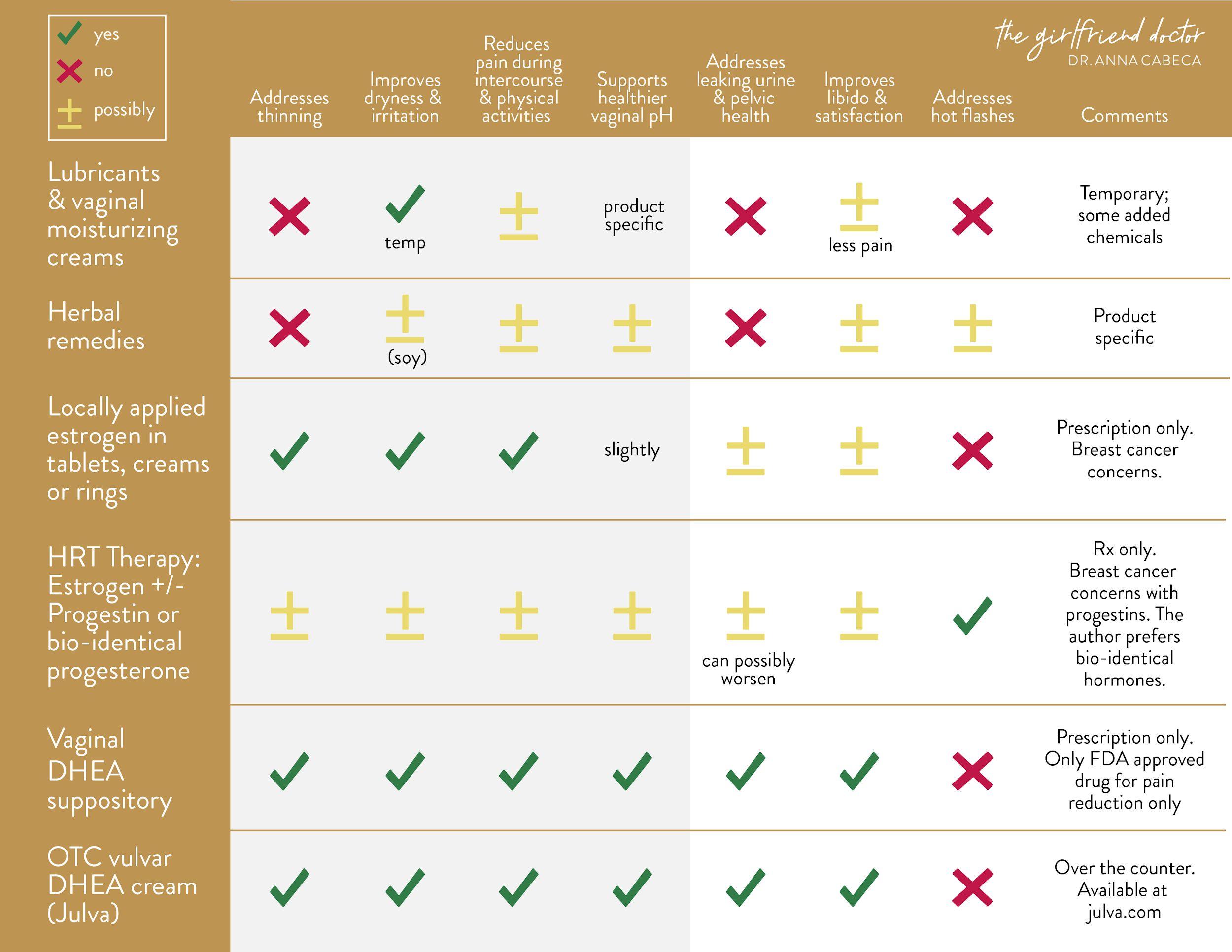

So,
While helpful for lubrication these products are primarily cosmetic and do not treat underlying concerns. They may help with irritation and painful intercourse due to the reduction of dryness. This list is by no means inclusive. My preference is always to avoid petroleum and parabens in any product. The vagina is highly absorbent and sensitive, so check labels and choose clean products.
Here are common categories and brands:
Water-based lubricants include: K-Y Jelly, FemGlide, Summer’s Eve are
“While helpful for lubrication these products are primarily cosmetic and do not treat underlying concerns. ”
common and are non-staining. I recommend cleaner options like Yes! and Good Clean Love brands.
Silicone-based lubricants include: Pink, Pure Pleasure and others.
Oil-based lubricants include: Using mineral oil, petroleum jelly or baby oil. These are not recommended as they can actually cause irritation and have also been associated with high rates of latex condom breakage.
Vaginal moisturizers include: Yes!, Luvena, Replens, Moist Again, Fresh Start and K-Y Liquibeads.

So,
Natural solutions such as organic coconut oil, Ayurvedic ghee (combined with herbs) and Yes! (OTC organic lubricant) do not contain the additional chemicals that can be seen in other commercial lubricant and vaginal moisturizing solutions.


Watch my video at https://dranna.com/whatsinmycupboard, to see how I make my own natural lubricant with my favorite ingredients!

So,
Herbal therapies are marketed to address a wide variety of menopausal symptoms such as night sweats, hot flashes, mood, energy level, weight loss and also vaginal dryness.
OTC herbal remedies typically contain black cohosh, soy isoflavones, magnolia bark, maca (my favorite) and other herbal ingredients. In particular, products containing soy isoflavones have been marketed to address vaginal dryness symptoms.
In 2003 one study showed that a soy-rich diet was shown to increase the maturation indices of vaginal cells (i.e. healthy vaginal walls) and deemed an effective preventive intervention against menopausal effects and vaginal atrophy, but more research is needed.14
Soy products may not be appropriate for women having had breast cancer. This is because the majority of our soy products are genetically modified (i.e. GMO). For this reason I advise women in only using non-GMO fermented
14 L.M. Chiechj, G. Putignano, V. Guerra, M.P Schiavelli, A.M. Cisternino, C. Carriero. The effect of a soy rich diet on the vaginal epithelium in postmenopause: a randomized double blind trial. Maturitas. 2003. Aug 20;45(4):241-6.

So, are your lady parts a desert or lush oasis?
soy foods such as miso or tempeh, in moderation.
Sea Buckthorn oil can help with mucosal integrity within the vagina; reducing vaginal dryness and irritation. Research has shown it can improve moisture and elasticity within the vagina, becoming a potential natural alternative for women not able to use estrogen treatment for vaginal atrophy (i.e. due to breast cancer concerns).
Other herbal products are marketed with a focus on hot flashes and night sweat symptoms alone.
“I have advised women in only using non-GMO fermented soy foods such as miso or tempeh in moderation.”
Black cohosh, for example, has been shown in some studies to address hot flash and night sweat symptoms, but additional studies are needed. In particular, the American College of Obstetricians and Gynecologists (ACOG) reports a concern that many of these early studies were poorly designed and did not evaluate the safety and effectiveness of black cohosh beyond 6 months of use.
15
Some herbal products available in the market are Estroven and Remifemin.
15 Available at: http://umm.edu/health/medical/altmed/herb/black-cohosh. Accessed January 2, 2017.

The good, the bad … and the ugly!
Julie, my 57 year old teacher mentioned earlier, had been told to use vaginal estrogen for vaginal dryness but wanted to explore other options as she was concerned about the safety of estrogens.
This is usually the standard first line prescription for women with this complaint. So let’s discuss this.
The predominant medical prescriptive therapy of vaginal dryness – for over 75 years - has been with vaginal estrogen.
The formula Premarin (predominantly estrone sulfate from pregnant mare urine) was introduced in 1941.
Let’s look at the different estrogen options that are available.

So, are your lady parts a desert or lush oasis?
“Vaginal Estrogen helps improve the thickness and elasticity of the vaginal lining but does not appear to affect the deeper tissue or supporting muscles. ”
Estrogen – The good, the bad...and the ugly!
Vaginal estrogen therapy can be prescribed as vaginal tablets, creams or rings.
These are delivered locally within the vagina and therefore minimize estrogen increases in blood levels along with related possible side effects. They help improve the thickness and elasticity of the vaginal mucosal lining but do not appear to affect the deeper tissue or supporting muscles.
This is such an important aspect of vaginal health that has been going unaddressed for women.
Manufacturers of these prescription-only products advertise that they help with dryness, pain during intercourse and painful urination.
Rather than just temporarily adding moisture (like the lubricants of the previous section) they actually work to reverse the thinning and dryness of vaginal tissue; these effects may help with painful sexual intercourse.
Additionally, estrogen can improve vaginal pH by adding some moisture back which can help support the normal vaginal flora and bacteria; however, the effect appears to be small.
So, are your lady parts a desert or lush oasis?

Estrogen – The good, the bad...and the ugly!
Examples of vaginal estrogen therapies include the prescriptions: Vagifem, Premarin, Estring and Estrace. Vaginal estrogen therapy is typically not recommended for some women. Women with breast cancer or women with a history of stroke or heart attack, blood clots or liver disease are typically not offered estrogen replacement therapies because of these known risks with oral estrogen replacement.16 Oral hormone administration versus topical or vaginal hormone administration has very different effects and vaginal estrogen use has not shown these same risks.
The research with vaginal estrogen, in the case of women who have had breast cancer, reveals it to be a safe option for quality of life and research has shown it can even decrease the morbidity and mortality of those women who have had breast cancer.
17
16 Rippy L, Marsden J. Is HRT justified for symptom management in women at higher risk of developing breast cancer? Climacteric. 2006;9:404–15.
17 Available at: https://www.ncbi.nlm.nih.gov/pmc/articles/PMC3862044/

So, are your lady parts a desert or lush oasis?
Estrogen products, either alone or in combination with other hormones like progestins (synthetic) or progesterone (bioidentical), that raise levels of the hormone throughout the body (systemically) are referred to as “hormone replacement therapy (HRT)”. These products are marketed to address vaginal atrophy and related pain during sex in postmenopausal women as well as addressing other common symptoms of menopause such as hot flashes and night sweats.
“Estrogen products, either alone or in combination, that raise levels of the hormone throughout the body are referred to as Hormone Replacement Therapy (HRT).”
Despite their benefits on vasomotor symptoms (hot flashes and night sweats), 40% of women receiving systemic oral estrogen therapy have persistent vaginal symptoms.
18
Often local (vaginal) estrogen treatment is preferred unless hot flashes are the major issue.
18 S.L. Johnston, S.A. Farrell, C. Bouchard, et al. The detection and management of vaginal atrophy. J Obstet Gynaecol Can 2004;26:503-515.

So, are your lady parts a desert or lush oasis?
Studies have shown controversially that postmenopausal women do not benefit from oral hormone therapy for treatment of urinary incontinence. Some studies conclude that HRT has been associated with worsening urinary incontinence.
19 HRT, typically not bioidentical, including estrogen and progestin (i.e. synthetic progesterone which differs from bio-identical progesterone), is not known to address libido although pain during sexual intercourse may be less.
HRT therapy has been shown to help prevent osteoporosis.
20
Oral hormone replacement therapy prescriptions which contain estrogen alone or with a progestin (synthetic progesterone) have known risks relating to increased risk of blood clots, heart attack and stroke with oral administration and an increase in breast cancer is noted with the addition of progestins.
19 Jay H. Lee, MD, Suzanne Gomez, MD, Terry Ann Jankowski, MLS. Hormone therapy for postmenopausal women with urinary incontinence. Am Fam Physician. 2011 Jul 1;84(1).

So, are your lady parts a desert or lush oasis?
It has always been my preference from clinical and scientific experience and research that hormone replacement should only be bioidentical and in the lowest effective dose initially to achieve optimal results.
“Hormone replacement should only be bioidentical and in the lowest effective dose to achieve optimal results.”
This is true for replacement of all hormones including progesterone, estrogen, testosterone and DHEA.
So, are your lady parts a desert or lush oasis?
“DHEA has also been found to play an important role in addressing vaginal dryness (and many other vaginal atrophy symptoms)”

After speaking with my patient Julie about the good, bad and the ugly of estrogen, I wanted to share with her the new therapeutic use of androgens for vaginal health. The excellent results in women are exciting. The research has also demonstrated the general safety of it with judicious use.
You may have noticed in the chart on Vaginal Dryness the excellent benefits of DHEA.
While most research and available treatments for vaginal dryness have been focused on the effects of diminishing estrogen and testosterone, DHEA has also been found to play an important role in addressing vaginal dryness (and many other vaginal atrophy symptoms).
Remember this hormone from earlier in the eBook?
DHEA is an androgen it can convert to testosterone.
Androgens are important to the integrity of skin, muscle, and bone (in both males and females) and have a role in maintaining libido. energy level and mental alertness, provide cardiovascular protection by lowering cholesterol, and enhance bone building (by increasing calcium retention).
You’re probably saying, “Great! Give me some!” talk about this more then!
DHEA originates primarily from the adrenal gland and the ovaries in women and testes in men. It leads to the production of active sex hormones like testosterone or estrogens in specific cells and tissues.

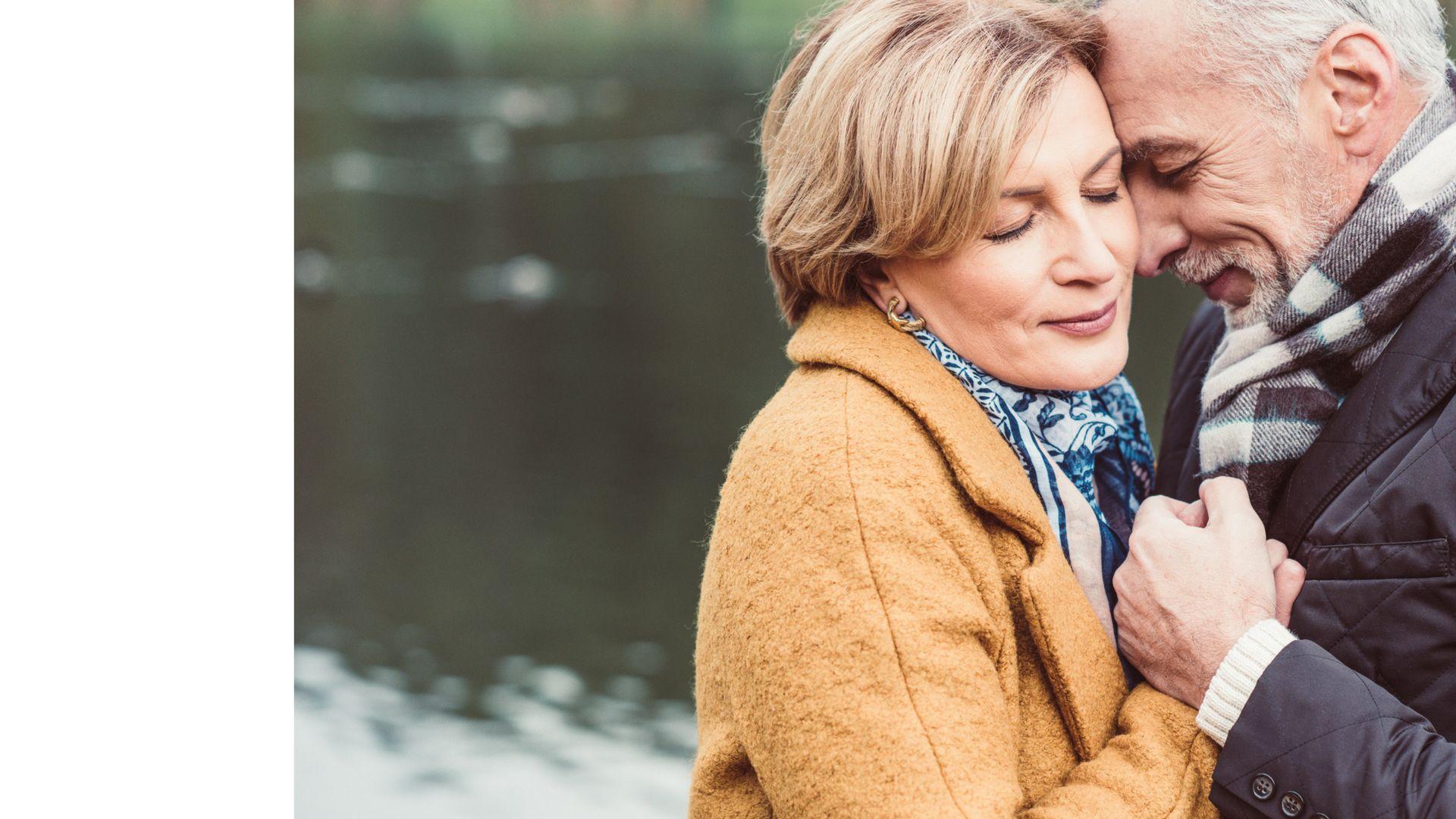
As an Emory trained physician I started using androgen therapy in my private practice in 1999. I prescribed bioidentical DHEA and testosterone vaginally or had patients apply it topically to the vulvar area.
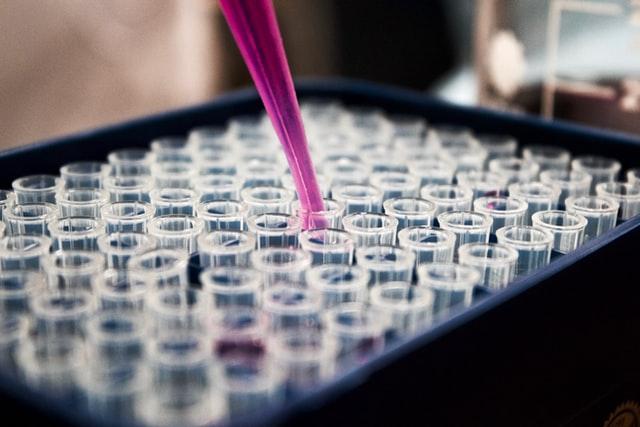
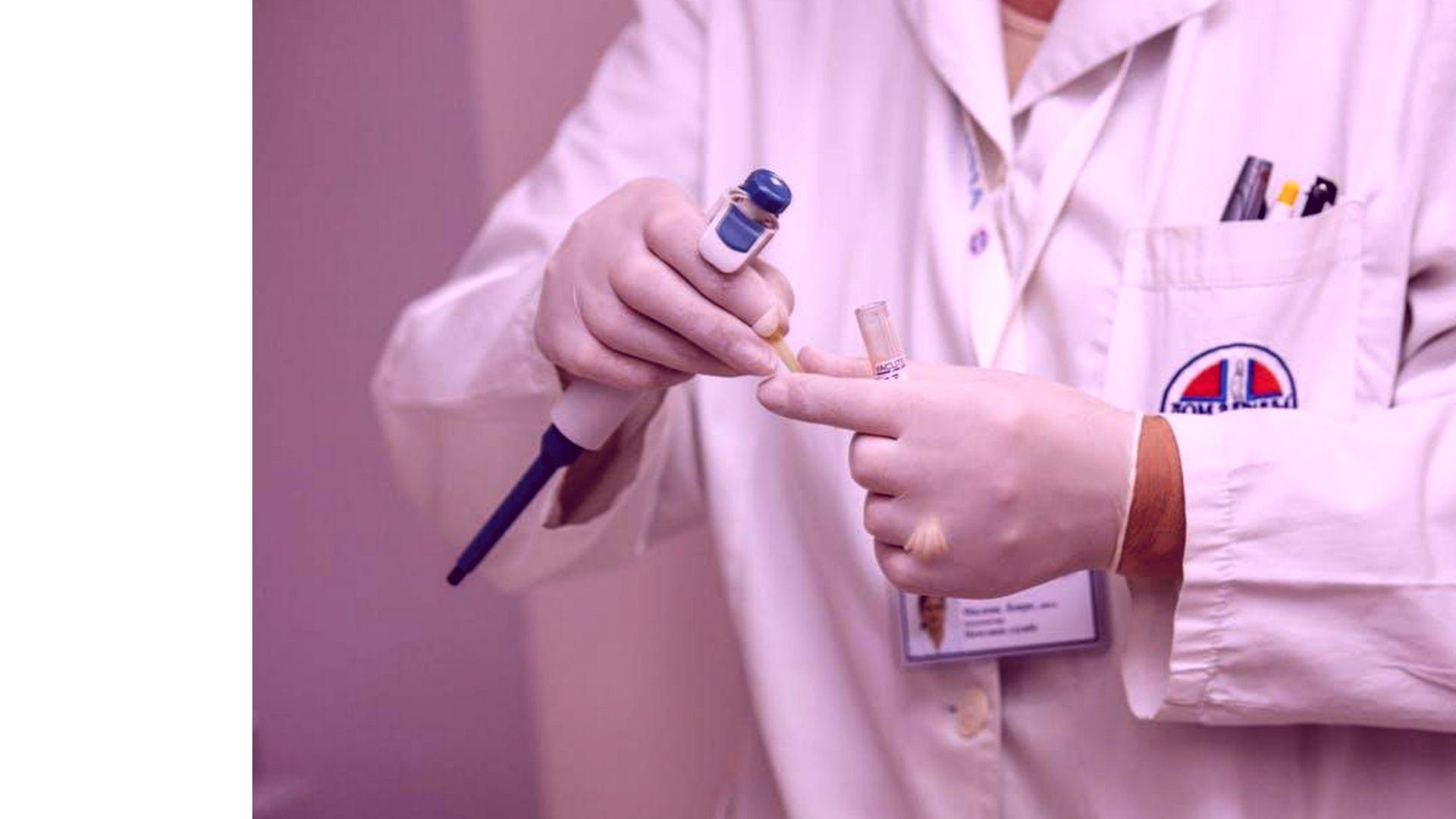
So, are your lady parts a desert or lush oasis?

As estrogen levels naturally decrease it is DHEA that continues to be a remaining primary source of estrogens and androgens in the woman’s body after ovarian decline.
DHEA produced by the body naturally “extends” protective benefits to women as their estrogen levels decrease, but only for a time. There is a progressive decrease in serum DHEA which starts in our mid-twenties with an average 60% loss observed by menopause. 21
It is such an important hormone in our stress response and vital for energy and health throughout our lives. All my online programs have really focused on increasing DHEA naturally through the little things and thoughts we can do on a daily basis to improve our quality of our life and of our days and nights!
21 Labrie F, Be´langer A, Cusan L, Gomez JL, Candas B. Marked decline in serum concentrations of adrenal C19 sex steroid precursors and conjugated androgen metabolites during aging. J Clin Endocrinol Metab 1997;82:2396-2402.
So, are your lady parts a desert or lush oasis?
“There are many natural ways to improve our DHEA and it certainly surrounds a healthy circadian rhythm. ”

There are many natural ways to improve our DHEA levels and it certainly surrounds a healthy circadian rhythm.
Read this article for more info on sleep and resetting a healthy circadian rhythm.
(http://drannacabeca.com/the-health-benefit-of-seeing-sunrises-and-sunsets-s leep-better/).
Some foods and herbs can help too. Mighty Maca Plus is a helpful addition to your lifestyle and nutrition program and has been shown to improve DHEA levels naturally.
We won’t discuss this in detail here but I wanted to impress upon you the importance of always restoring your natural hormone balance before and while considering replacing any hormone.
So, are your lady parts a desert or lush oasis?

DHEA can be introduced and utilized by the body through many routes such as orally, vaginally by prescription, or through topical application.

So, are your lady parts a desert or lush oasis?
“While used for a variety of other health benefits, Oral DHEA has not been shown to address vaginal dryness or other vaginal atrophy symptoms.”

While used for a variety of other health benefits, Oral DHEA has not been shown to address vaginal dryness or other vaginal atrophy symptoms.
Since it is over the counter in the United States people sometimes also use too much. I have had women come in on 50mg! That’s too much! Oral routes in women should generally be less than 10 mg, if needed.
Men and women should both be aware that oral DHEA may be metabolized to testosterone and estrogen, as well as to DHT (dihydrotestosterone, which is a common cause of male baldness) in high amounts, so both monitoring and maintaining a low oral dosage are important.
We bypass much of this conversion with using a topical DHEA cream form, especially where I recommend it… on the vulva!
22 R.M. Goel, A.R. Cappola. Dehydroepiandrosterone sulfate and postmenopausal women. Curr Opin Endocrinol Diabetes Obes. 2011 Jun;18(3):171-6.
So, are your lady parts a desert or lush oasis?

Locally Applied DHEA
Topical DHEA has been found to have favorable effects on skin health and appearance 23 due to the production of collagen.
If DHEA is delivered directly to the vagina, the tissues transform DHEA to the estrogen, estradiol.24 This natural production of estradiol occurs without a significant release of estrogens systemically in the blood. So important!!
Locally applied DHEA has been shown to improve vaginal atrophy symptoms and we’ll cover some of this research shortly.
It also improves the vaginal pH by making the vagina more acidic (the vaginal pH is optimal at 3.8-4.5), which means it will be less prone to infections.
23 Available at:
http://www.lifeextension.com/magazine/2010/12/new-research-substantiates-the-anti-aging-properties-of-dhea/page-02. Accessed January 2, 2017.
24 Labrie F, Bélanger A, Bélanger P, et al. Androgen glucuronides, instead of testosterone, as the new markers of androgenic activity in women. J Steroid Biochem Mol Biol. 2006;99:182–8.
So, are your lady parts a desert or lush oasis?
“I and other physicians have been able to write prescriptions for customized vaginal and topical DHEA and other hormones for decades with many positive results.”

Many women who have or have had breast cancer have struggled with vaginal atrophy, over 80% in fact.
Studies have looked at using DHEA vaginally in this group with very favorable results. I’ve summarized some of this research here.
(http://drannacabeca.com/using-julva-cream-if-youve-had-breast-cancer/).
Of course if you have had breast cancer, always discuss any therapy with your doctor beforehand. I don’t recommend DHEA while using Tamoxifen.
I and other physicians have been able to write prescriptions for customized vaginal and topical DHEA and other hormones for decades with many positive results.
There is a good deal of research on the benefits and effectiveness (as well as safety) of DHEA in treating vulvar-vaginal symptoms,
The research surrounding vaginally applied DHEA has shown it to:



So,
In a study reported in the Journal of The North American Menopause Society25 in 2016, daily intravaginal administration of DHEA caused highly statistically significant improvements in four measurements of vaginal atrophy.

In this study and in earlier studies local Prasterone (DHEA) resulted in these improvements with minimal changes in serum steroid levels.26 In one earlier 2009 study, 216 women were given 3 different daily doses of Prasterone, 0.25%, 0.50% and 1.0%.
25 F. Labrie, D.F. Archer, W. Koltun, et al. Efficacy of intravaginal dehydroepiandrosterone (DHEA) on moderate to severe dyspareunia and vaginal dryness, symptoms of vulvovaginal atrophy, and of the genitourinary syndrome of menopause. Menopause. 2016 Mar;23(3):243-256.

So, are your lady parts a desert or lush oasis?
All three doses resulted in highly significant beneficial changes in vaginal secretions, a decrease in vaginal pH, epithelial surface thickness, color, and epithelial integrity.
“I have numerous case studies demonstrating improvements in vaginal musculature as well as urinary incontinence issues through the use of locally applied DHEA.”
In another 2009 study, DHEA was applied locally within the vagina resulting in a significant improvement to all three layers of the vagina (epithelium, lamina propria and muscularis) versus simply affecting the superficial epithelial cells. 27
I have numerous case studies demonstrating improvements in vaginal musculature as well as urinary incontinence issues through the use of locally applied DHEA.
26 Fernand Labrie, MD, PhD, David Archer, MD, Ce´line Bouchard, MD, et al. Intravaginal dehydroepiandrosterone (Prasterone), a physiological and highly efficient treatment of vaginal atrophy. Menopause: The Journal of the North American Menopause Society. 2009;16(5):907-922.
27 F. Labrie, D.F. Archer, C. Bouchard, et al. Effect of intravaginal dehydroepiandrosterone (Prasterone) on libido and sexual dysfunction in postmenopausal women. Menopause: The Journal of the North American Menopause Society. 2009 Sept-Oct;16(5):923-31.

So, are your lady parts a desert or lush oasis?
In clinical studies, locally applied DHEA has been found to increase bone mineral density28 and to result in an increase in serum osteocalcin, a marker of bone formation.29
4. Decrease pain during intercourse (dyspareunia)
In a clinical trial in 2015 using intravaginal Prasterone (DHEA 6.5 mg daily for 12 weeks) there was a statistically significant beneficial effect on moderate to severe dyspareunia.30 The authors also noted that vaginal dryness and dyspareunia presented together in 70-80% of women.
28 F. Labrie, V. Luu-The, C. Labrie, et al. Endocrine and intracrine sources of androgens in women: inhibition of breast cancer and other roles of androgens and their precursor dehydroepiandrosterone. Endocr Rev. 2003 Apr;24(2):152-82.
29 F. Labrie, P. Diamond, L. Cusan, J.L. Gomez, A. Be´langer, B. Candas. Effect of 12-month dehydroepiandrosterone replacement therapy on bone, vagina, and endometrium in postmenopausal women. J Clin Endocrinol Metab. 1997;82:3498-3505.
30 D.F. Archer, F. Labrie, C. Bouchard, et al. Treatment of pain at sexual activity (dyspareunia) with intravaginal dehydroepiandrosterone (Prasterone). Menopause: The Journal of The North American Menopause Society. 2015 Sep;22(9):950-63.

So, are your lady parts a desert or lush oasis?
The authors of this 2015 study reconfirmed their findings in a 2016 study.
The 2016 trial included 558 postmenopausal women with moderate to severe dyspareunia as their most bothersome vaginal atrophy symptom. Results were once again statistically significant for beneficial effects at the daily intravaginal dose of 0.50% (6.5 mg) of Prasterone.31
“In November 2016
the U.S. Food and Drug Administration (FDA) approved the first product containing the active ingredient Prasterone, also known as DHEA.”
In November 2016 the U.S. Food and Drug Administration (FDA) approved the first product containing the active ingredient Prasterone, also known as DHEA.32
The product, Intrarosa®, was approved to treat women experiencing moderate to severe pain during sexual intercourse, a chief symptom of vulvar atrophy.
31 F. Labrie, D.F. Archer, W. Koltun, et al. Efficacy of intravaginal dehydroepiandrosterone (DHEA) on moderate to severe dyspareunia and vaginal dryness, symptoms of vulvovaginal atrophy, and of the genitourinary syndrome of menopause. Menopause: The Journal of The North American Menopause Society. 2016 Mar;23(3):243-56.
32 Available at: http://www.fda.gov/NewsEvents/Newsroom/PressAnnouncements/ucm529641.htm. Accessed January 2, 2017.

So,
In the 2009 study, 1.0% (13 mg) DHEA applied locally within the vagina resulted in a marked improvement to four aspects of sexual dysfunction: desire, arousal, orgasm, and sexual function.33

In a 2015 study the long-term effect on the sexual function of 154 postmenopausal women reporting some form of vaginal atrophy was evaluated based on a 52-week treatment with daily intravaginal 0.50% (6.5 mg) DHEA.
33 F. Labrie, D.F. Archer, C. Bouchard, et al. Effect of intravaginal dehydroepiandrosterone (Prasterone) on libido and sexual dysfunction in postmenopausal women. Menopause: The Journal of the North American Menopause Society. 2009 Sept-Oct;16(5):923-31.

So,
Results showed increases as follows: desire, arousal, lubrication, orgasm, satisfaction and pain were improved by 28%, 49%, 115%, 51%, 41% and 108%, respectively.34
There has also been some exciting research done (not yet published) that has shown vaginally applied DHEA to effectively treat vaginal dryness, pain and other vaginal atrophy symptoms – including libido – especially in women having had breast cancer.
This 2014 clinical trial has not yet been published but I’ve included information on my website should you be interested in learning more.
(http://drannacabeca.com/using-julva-cream-if-youve-had-breast-cancer/).

So, are your lady parts a desert or lush oasis?
Patients would come to me complaining of vaginal atrophy symptoms including vaginal dryness, irritation, and pain during intercourse and urinary leakage. Many suffered from libido issues.
I routinely achieved positive results with my patients for improvements to sexual health and vaginal dryness, along with a reduction in irritation and pain during intercourse.
“I routinely achieved positive results with my patients for improvements to sexual health and vaginal dryness, and a reduction in irritation and pain during intercourse.”
There were also regular improvements in libido and sexual satisfaction. Some patients additionally reported decreased incontinence symptoms.
Many patients seeing me for possible surgery due to pelvic prolapse and stress incontinence issues were in some cases able to avoid surgery altogether once I prescribed vaginal DHEA and testosterone to them along with pelvic floor exercises.
For these patients, a physical examination verified their reported improvements;

So, are your lady parts a desert or lush oasis?
there were notable tissue improvements in the lining and within the vaginal rugations (the normal folds and elasticity) as well as contractility (the ability to contract the muscles of the pelvic floor).
This meant more strength, more support to the urethra and bladder too.
Wonderful anti-aging effects.
Creating a non-prescription solution for women
I wanted to be able to provide a non-prescription based topical solution that provided the least systemic effect. This would provide women all over the world with a less embarrassing option to address a significant quality of life and overall health issue associated with aging.
Three years of research along with my extensive clinical results led me to combine DHEA in cream form with other quality natural ingredients having been shown to be beneficial to the skin and its underlying tissues.

So, are your lady parts a desert or lush oasis?
Those key ingredients include Alpine Rose Stem Cells, Emu oil, Vitamin E, Coconut oil and Shea Butter.
“Personally, I feel the qualities of the Alpine rose represent the female very well: sexy and beautiful, with the ability to conquer challenges with grace and resilience.”
Alpine Rose Stem Cells are harvested from the Swiss alpine rose and contain unique compounds that help the plant survive extremely challenging environments.
This gorgeous rose lives through the ice and snow, survives very acidic soil and is less susceptible to dehydration. The stem cells have been shown to increase skin cell moisture, protect against age-related oxidative stress and have antiviral effects; and they are loaded with polyphenolic antioxidant compounds.
35
Personally, I feel the qualities of the Alpine rose represent the female very well: sexy and beautiful, with the ability to conquer challenges with grace and resilience.
35 Available at:
https://mibellebiochemistry.com/app/uploads/2015/03/Alpine-Rose-Active_Ecocert_Certified_Alpine_Rose_Active_Combats_Ag ing_by_Protecting_Skin_Proteins_CosmeticsDesign_02_2011.pdf. Accessed January 2, 2017.

So, are your lady parts a desert or lush oasis?
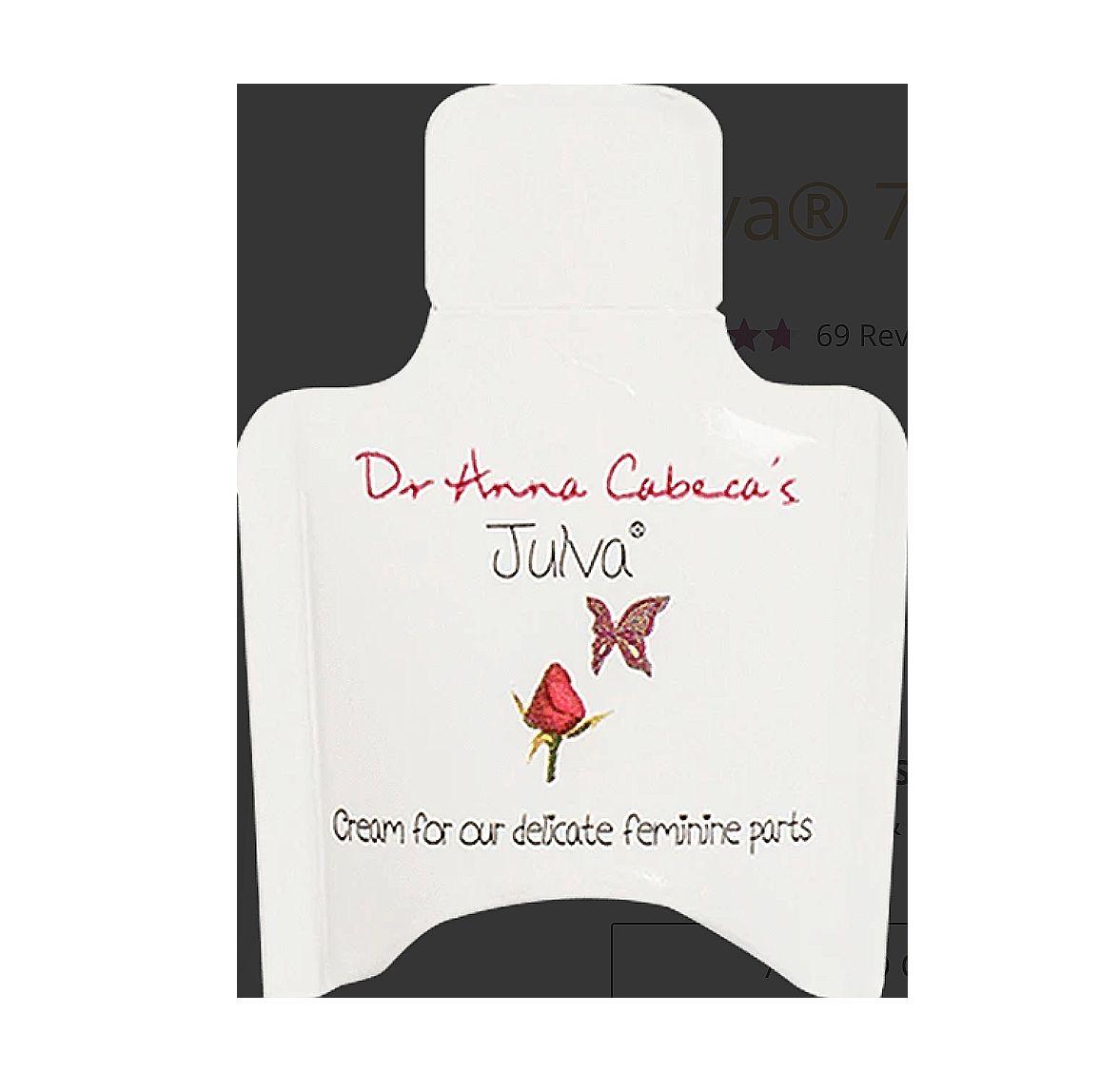
Vitamin E has long been a nourishing ingredient topically and in research has shown to provide anti-inflammatory support.
Coconut oil provides a safe and natural lubricant and is one of my favorite natural products to recommend on its own. Research has shown it has other valuable qualities as well.
Emu oil promotes deeper tissue absorption and regenerates skin cells while improving thinning skin.
My research concluded that a small 5-10 mg daily dosage of DHEA topically applied to the vulva achieved excellent symptom improvements, after which I recommend a reduced maintenance dosage protocol.
I incorporated DHEA into my cream formulation and Julva was born!